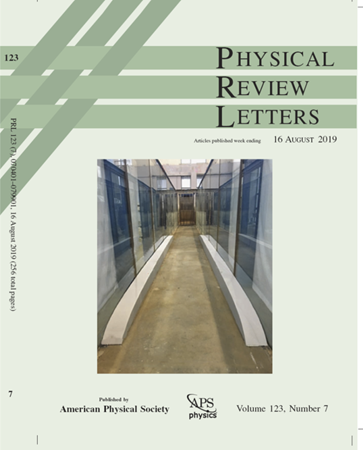雷德贝格模拟器中超越 PXP 模型的量子多体疤痕
IF 9
1区 物理与天体物理
Q1 PHYSICS, MULTIDISCIPLINARY
引用次数: 0
摘要
最近在里德伯原子模拟器中观察到的持续复苏挑战了我们对热化的理解,并引起了人们对量子多体伤痕(QMBSs)概念的极大兴趣。qmbs是与多体哈密顿谱中的典型特征态共存的非热高激发特征态,并已在多种理论模型中得到报道,包括所谓的PXP模型,由Rydberg模拟器近似实现。与此同时,qmbs有多普遍以及它们在什么模型中物理实现的问题仍然是开放的。在这篇文章中,我们证明了qmbs存在于一个更广泛的模型族中,该模型族包括PXP并将其推广到具有不同周期性的更长距离约束和状态。我们表明,在每个模型中都可以找到QMBS家族。它们中的每一个都依赖于不同的近似su(2)代数,导致所有情况下的振荡动力学。然而,与PXP模型相反,他们的观察需要从弱纠缠初始状态启动动力学,而不是从产物状态启动动力学。本文报道的qmbs可以用Rydberg原子模拟器在更远距离的Rydberg阻滞下进行实验探测。2025年由美国物理学会出版本文章由计算机程序翻译,如有差异,请以英文原文为准。
Quantum Many-Body Scars beyond the PXP Model in Rydberg Simulators
Persistent revivals recently observed in Rydberg atom simulators have challenged our understanding of thermalization and attracted much interest to the concept of quantum many-body scars (QMBSs). QMBSs are non-thermal highly excited eigenstates that coexist with typical eigenstates in the spectrum of many-body Hamiltonians, and have since been reported in multiple theoretical models, including the so-called PXP model, approximately realized by Rydberg simulators. At the same time, questions of how common QMBSs are and in what models they are physically realized remain open. In this Letter, we demonstrate that QMBSs exist in a broader family of models that includes and generalizes PXP to longer-range constraints and states with different periodicity. We show that in each model, QMBS families can be found. Each of them relies on a different approximate su(2) algebra, leading to oscillatory dynamics in all cases. However, in contrast to the PXP model, their observation requires launching dynamics from weakly entangled initial states rather than from a product state. QMBSs reported here may be experimentally probed using Rydberg atom simulator in the regime of longer-range Rydberg blockades. Published by the American Physical Society 2025
求助全文
通过发布文献求助,成功后即可免费获取论文全文。
去求助
来源期刊

Physical review letters
物理-物理:综合
CiteScore
16.50
自引率
7.00%
发文量
2673
审稿时长
2.2 months
期刊介绍:
Physical review letters(PRL)covers the full range of applied, fundamental, and interdisciplinary physics research topics:
General physics, including statistical and quantum mechanics and quantum information
Gravitation, astrophysics, and cosmology
Elementary particles and fields
Nuclear physics
Atomic, molecular, and optical physics
Nonlinear dynamics, fluid dynamics, and classical optics
Plasma and beam physics
Condensed matter and materials physics
Polymers, soft matter, biological, climate and interdisciplinary physics, including networks
 求助内容:
求助内容: 应助结果提醒方式:
应助结果提醒方式:


